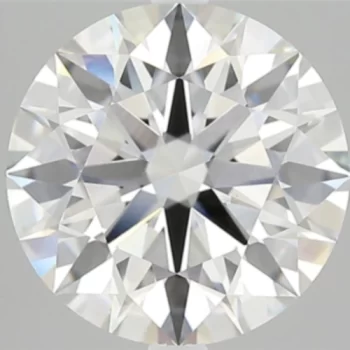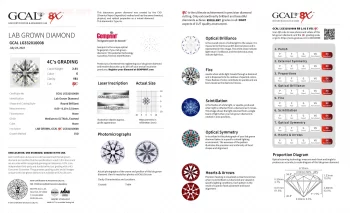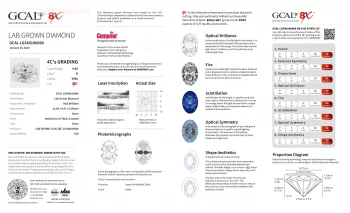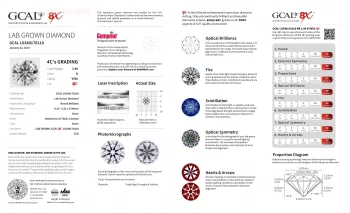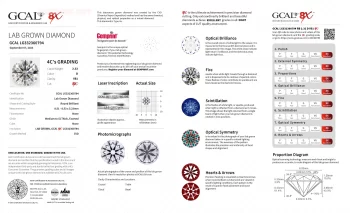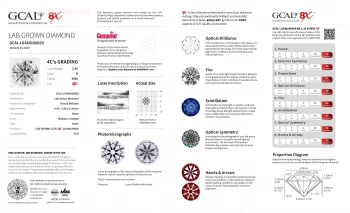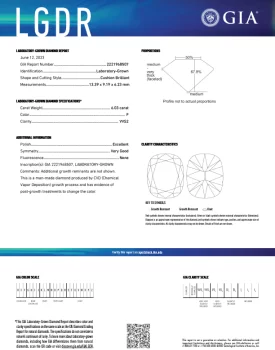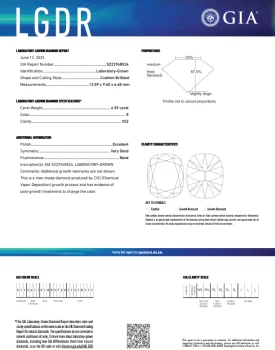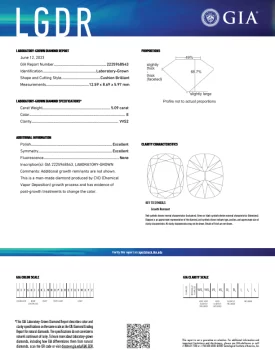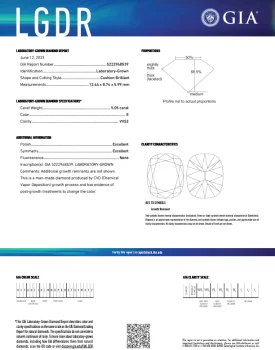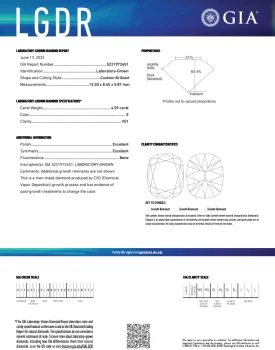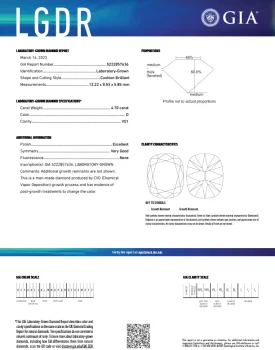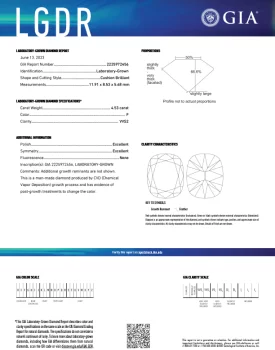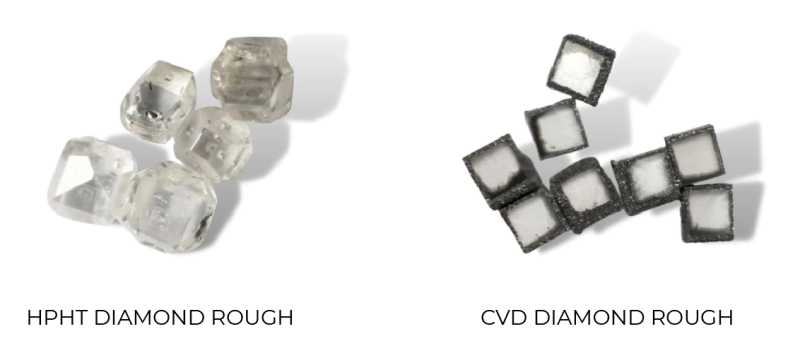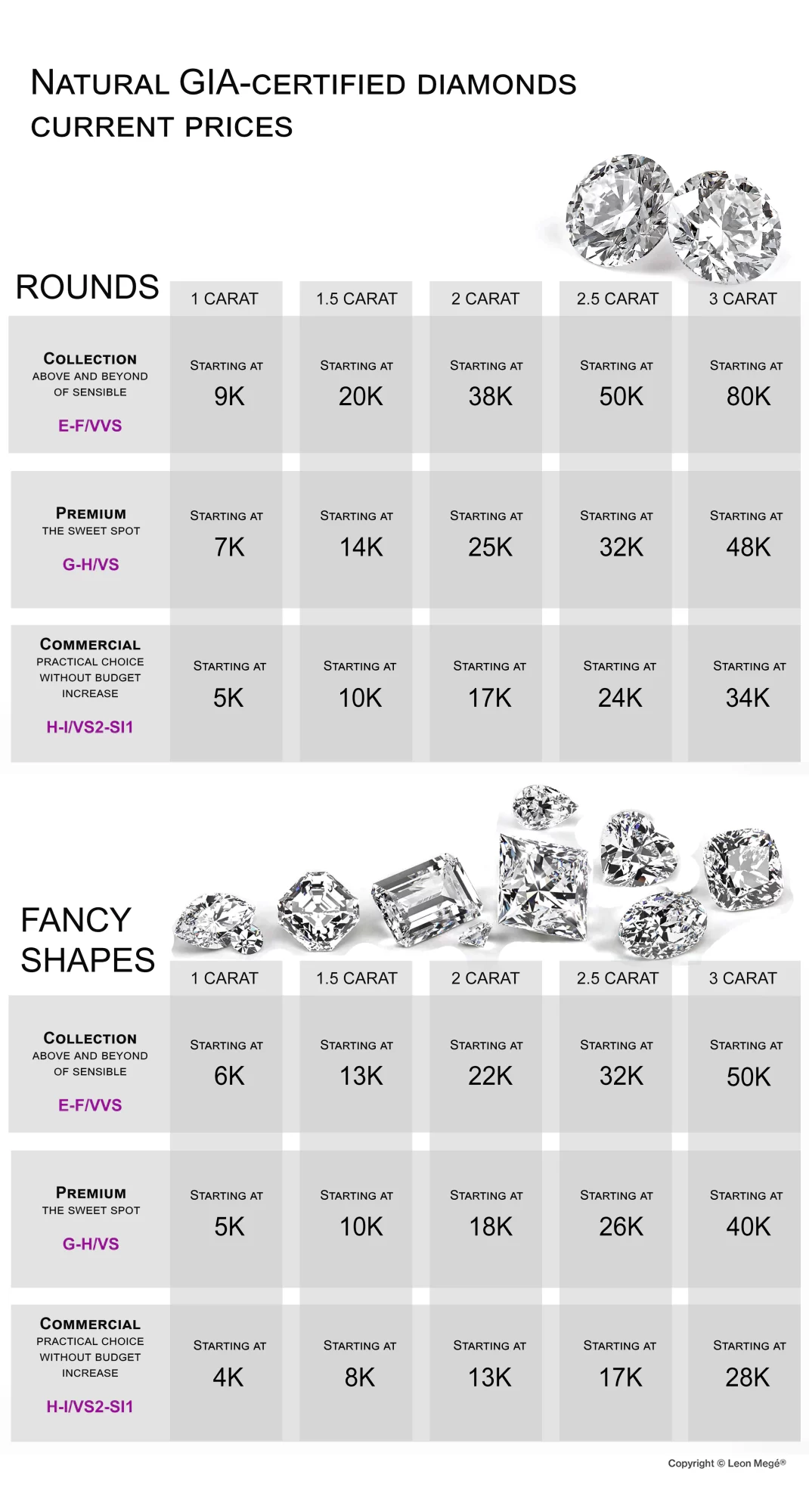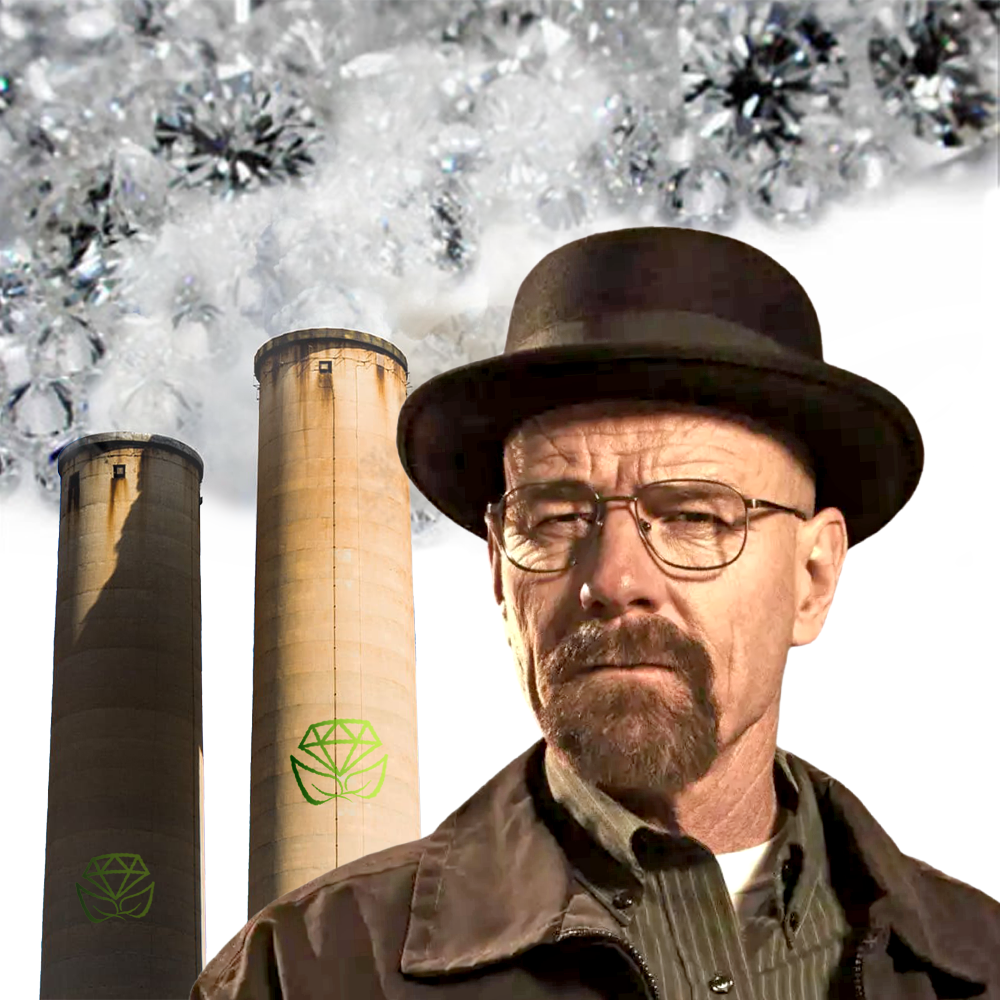
Lab-grown diamonds are identical to those found in nature. Both types have the same physical, chemical, and optical properties, so only strenuous gemological testing can tell them apart. Unlike natural diamonds that offer a mysterious cache of rarity and historical significance, lab-grown diamonds offer low prices and unlimited options. Natural diamonds are mined in the wild around the globe, while lab-grown diamonds are cultivated in factories.
In 1954 Howard Tracy Hall synthesized the first artificial diamond at the GE lab in Schenectady, NY. He was rewarded with a $10 US savings bond for that invention, and GE went on to make a fortune. Forty years later, gem-quality material suitable for jewelry was produced.
We offer CERTIFIED lab-grown diamonds of any size at wholesale prices
-
4.32-carat super ideal lab-grown round diamond GCAL
-
2.01-carat super ideal lab-grown round diamond GCAL
-
4.05-carat lab-grown oval diamond GCAL
-
3.56-carat lab-grown oval diamond GCAL
-
2.08-carat super ideal lab-grown round diamond GCAL
-
2.32-carat super ideal lab-grown round diamond GCAL
-
2.36-carat super ideal lab-grown round diamond GCAL
-
6.03-carat Antique cushion lab-grown diamond GIA
-
5.59-carat Antique cushion lab-grown diamond GIA
-
5.53-carat Antique cushion lab-grown diamond GIA
-
6.59-carat Antique cushion lab-grown diamond GIA
-
5.09-carat Antique cushion lab-grown diamond GIA
-
5.05-carat Antique cushion lab-grown diamond GIA
-
4.59-carat Antique cushion lab-grown diamond GIA
-
4.59-carat Antique cushion lab-grown diamond GIA
-
4.70-carat Antique cushion lab-grown diamond GIA
-
4.53-carat Antique cushion lab-grown diamond GIA
Leon Mege is your one-stop shop for certified lab-grown diamonds at wholesale prices. A lab-grown option will allow you to choose a better cut, higher grade, and much larger diamond. For over 30 years, Leon Mege has been using and promoting lab-grown diamonds. We are trendsetters pioneering the use of lab-grown diamonds in bespoke hand-forged jewelry. The same relentless technological progress that brought us Gorilla Glass Victus and Peeps eyeglass cleaners gave us the miracle of diamond science that is conflict-free, ethically produced, and 100% recyclable.
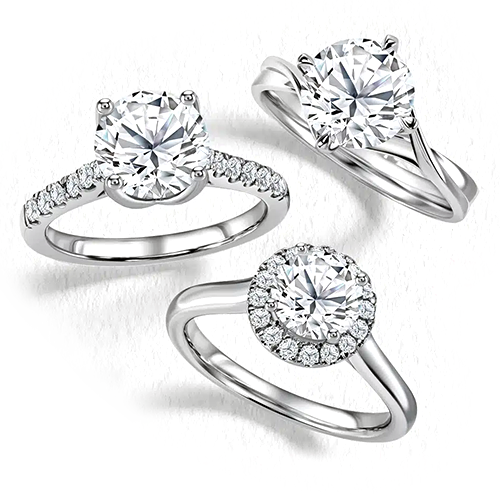

How to tell the difference?
The lab-grown diamonds are authentic diamonds even a veteran gemologist cannot identify from those spit out by volcanos. Unlike lab-grown rubies and sapphires, synthetic diamonds don’t have tell-tale inclusions, just like in-vitro children cannot be told apart from children spawn through physical relationships.
Lab-grown diamonds are NOT “imaginary” diamonds like simulants such as moissanite or CZ’s. Only technologically advanced and costly equipment gem labs use can separate one another.
Are lab-grown diamonds ecologically clean?
The myth of lab-grown diamonds’ “sustainability” or “eco-friendliness” is perpetrated by the producers. Lab-grown diamonds are “green,” which is achieved by painting the machinery with green paint (see illustration). All jokes aside, most factories are located in countries with little regard for the environment. The immense heat and diabolical pressure needed to produce a one-carat diamond are compared to the energy of a volcanic eruption. The energy required to synthesize a diamond can go as high as 1,000 kWh per carat, depending on the production method. That does not chime well with false claims about zero carbon footprint. To learn more, watch the 2022 documentary Nothing Lasts Forever.
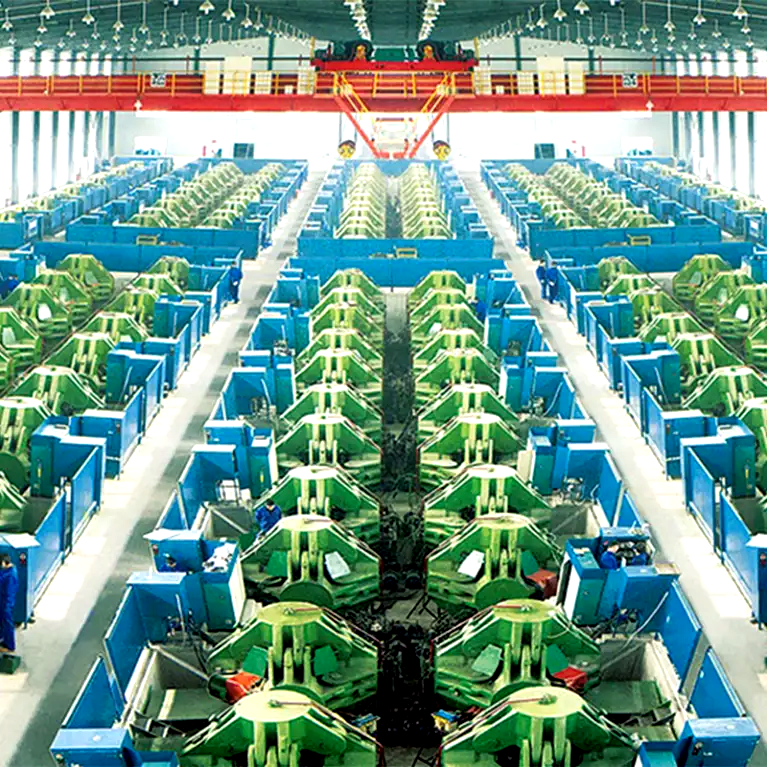

What do lab-growns cost?
Lab-grown diamonds are priced 70-80% less than a natural equivalent. For example, as of May 2023, a two-carat ideal-cut lab-grown diamond graded D-F/VVS retails for approximately $3,000, while its natural counterpart sells for approximately 25K. Currently, lab-grown diamonds are priced according to the 4C’s: cut, clarity, color, and carat weight, with rates pegged to the natural price list. Undoubtedly this arrangement will change in the future, and lab diamond prices will become independent. Their prices depend only on the manufacturing cost profit, while natural prices reflect diamonds’ scarcity. While natural diamonds trade in a wide spectrum of colors and clarity grades, the low lab-grown prices narrow the selection to a few top grades. We expect eventually lab-grown diamonds to settle into 2-3 quality categories, where low grades become obsolete. Putting silly superstitions to rest, a lab-grown diamond will save tons of money compared to natural.
Fancy-colored lab-grown diamonds
Lab-grown diamonds can be created even in a wider range of colors than natural diamonds. This is because the diamond color determined by the impurities present in its crystal structure can be controlled during the process, allowing the creation of a rainbow assortment of lab-grown diamonds.
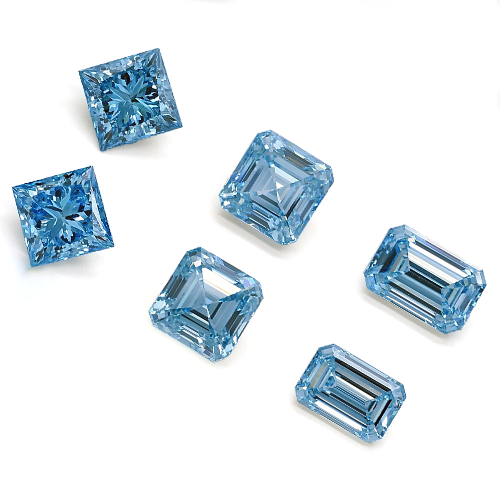

Are lab-grown diamonds romantic?
Absolutely! We can turn any part of a body into a diamond. It takes several months to grow a diamond from a lock of hair and does not cost much. Many young couples choose to incorporate a diamond grown from their hair into their engagement ring. Although any part of a human or animal body can be converted to the carbon used in the diamond creation, not just hair, most couples find using their hair mix very romantic.
How to turn a lock of hair into a diamond
Using strong acid solvents, the pure carbon is extracted from the hair in the form of fine powder. The hair powder is placed into a high-temperature vacuum tube furnace to prevent carbon from oxidizing and seared under extreme heat of approximately 2,500°F, turning the carbon into graphite. Refined and filtered 99.9% pure carbon graphite powder mixed with catalyst is cooked under a whopping pressure of 200 atmospheres and a temperature of 2,700°F (1,500°C), turning it into a crystal.
Does it harm the environment? You bet it does! But who cares, as long as between millions of carbon atoms making up a diamond, a few came from both of you? Well, there are some ethical questions; for example, what if you break up? Can the diamond be given to another person, and should you disclose that it was made with your ex’s hair? Who gets the ring at the time of the divorce? What if the ring is lost or stolen? Are you comfortable with a stranger wearing it? What if that WooDoo stuff is real?
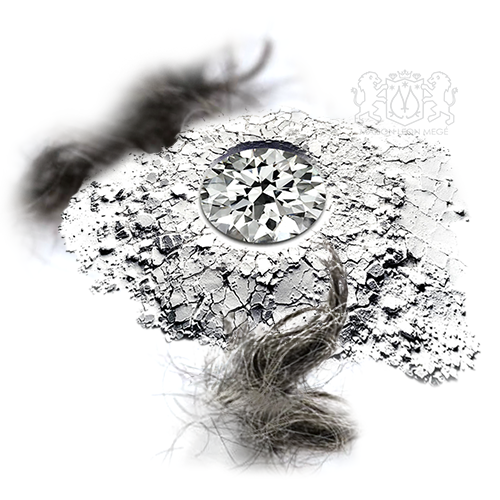
Diamonds from Tequila?
Researchers at Mexico’s University of Nueva Leon near Monterrey found that Tequila, the country’s national drink, produced a diamond film when heated under pressure. Google it if you don’t believe it. We can imagine the rigorous scientific effort by the heroic researchers who probably took many shots of 80% proof Tequila Blanco, which requires a short aging process. The late-night tests confirmed that the drink crystallized into a diamond-like structure. On the other hand, a breakthrough cancer drug created in Mexico from Corona beer turned out to be a hoax.
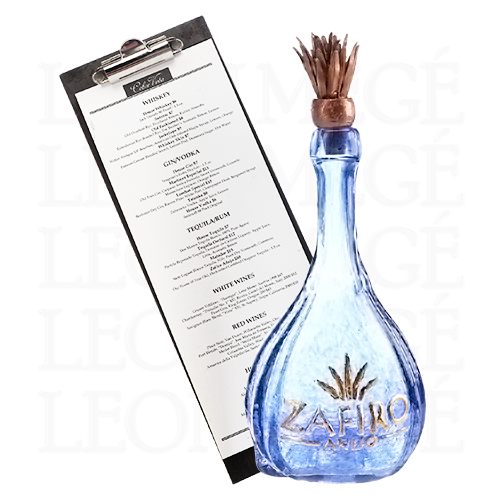
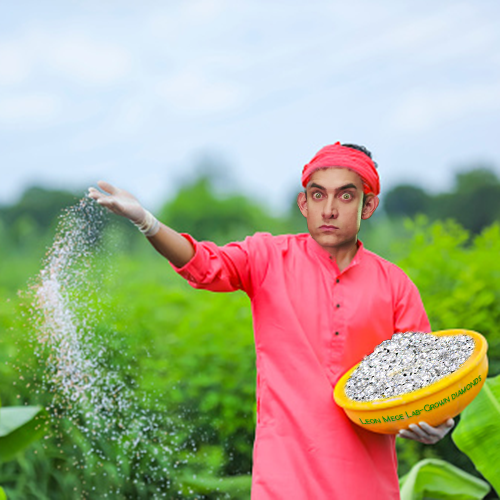
Growing diamonds
Visually and physically, lab-grown diamonds are identical to diamonds extracted from the ground. The crystal growth is induced by immense heat and pressure, similar to natural conditions and processes inside the earth. Layer by layer, carbon molecules are deposited on a diamond seed, and theoretically, it can grow to any size. For practical purposes, their growth is limited because huge diamonds have no practical purposes. However, in the future, when there will be diamond doorknobs, diamond desk lamps, and even diamond windows, the ginormous lab-grown diamonds might become useful again.

Blue Nuance diamonds
So-called Blue Nuance diamonds are some HPHT-grown diamonds with faint blue tints. Rarely found in nature, the blue tint results from the element Boron impregnating the crystal structure. The HPHT process uses boron as a catalyst and helps clear the nitrogen. Any noticeable tint, whether yellow, green, brown, or blue, can affect the diamond’s appearance and color grade. But unlike brown, gray, or yellow tints not mentioned in the lab report, the blue tint can be commented as “faint blue.” The bluish undertone typically lowers the color grade, which makes Blue Nuance diamonds more affordable. These stones often appear better because blue cancels out the yellow tint in stones below H in color.
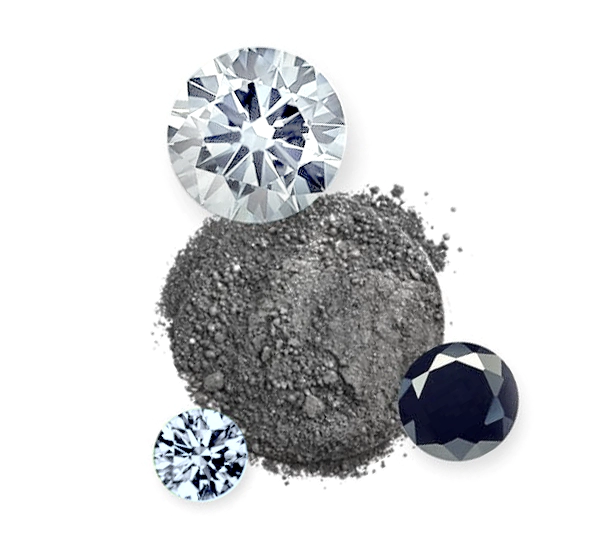
The lab-grown industry despises the term "synthetic." They insist on the term "lab-grown," which invokes peaceful green pastures where diamonds are roaming free, fattening up on organically grown graphite. What causes more harm to nature, mining, or synthesizing, is a subject for debate.
Before the 1800s, diamonds were so rare only kings and queens were lucky enough to wear them. But things changed. Despite what the diamond industry says now, the world is not running out of natural diamonds. The price of natural diamonds is kept artificially high by DeBeers. This monopoly has succeeded in controlling the diamond market for over two centuries. DeBeers and Alrosa, the Russian diamond mining monopoly, keep the supply of raw materials scarce and prices artificially high. DeBeers learned that diamonds are forever the hard way because every diamond ever found is still with us.
HPHT diamonds are more expensive to produce than CVD diamonds. However, there is absolutely no difference as far as the consumer is concerned.
HPHT is an acronym for High-Pressure High-Temperature, which is a process of subjecting carbon fuel to extreme pressure and temperature to turn it into a diamond crystal. CVD stands for Chemical Vapor Deposition, where superheated gas is used to stimulate and grow a small diamond "seed" crystal into a full-sized diamond.
The Lonsdaleite - a rare hexagonal form of diamond, harder and stronger than the diamond itself is found in meteorites. Supposedly, Lonsdaleite formed out of supercritical fluid at high temperatures and moderate pressures in meteorites. In the process, it preserved the structure of the pre-existing graphite. Later, a diamond partially replaced Lonsdaleite as the environment cooled and the pressure decreased. The finding of Lonsdaleite could revolutionize industrial diamond manufacturing.

